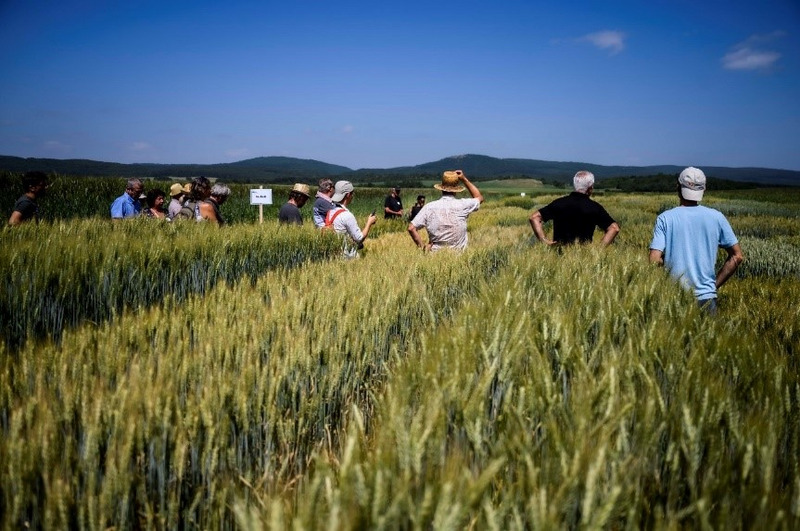Living labs and their role for the agroecology transition
Living Labs are a participatory way to develop solutions to a problem with all stakeholders and, therefore, can support the agroecology transition. Living labs for agroecology transition will work to improve sustainability and resilience not only at the agroecosystem level, but also at landscape level, while considering the food system as a whole. Their specificity will be that they will value and opt for local (agro-)biodiversity, gathering the different actors around the preservation of the environment as common goods.
Living Labs are open innovation arrangements with co-creation, user-centeredness and testing in real-life conditions as their main principles, following an activity cycle of experimentation, evaluation, and improvement.
Living labs operate as intermediaries among citizens, research organisations, companies, cities and regions for joint value co-creation, rapid prototyping or validation to scale up innovation and businesses. Living labs have common elements but multiple different implementations. Living labs can now be found in all kinds of contexts, from new technologies and artificial intelligence, health, urban planning to environmental and agricultural projects.
The European Network of Living Labs (EnoLL), founded in 2006 (legalised in 2010) and ALL-Ready partner, supports the evolution and the uptake of the LL paradigm worldwide and has developed a labelling process. According to ENoLL, 6 key elements must be present in a living lab, regardless of their application domain:
- active user involvement (i.e. empowering end users to have an impact on the innovation process)
- real-life setting (i. e. testing and experimenting “in the field”)
- multi-stakeholder participation (i. e. the involvement of producers, technology providers, service providers, relevant institutional actors, end users)
- a multi-method approach (i.e. the combination of methods and tools originating from e.g. ethnography, psychology, sociology, strategic management, engineering)
- co-creation (i.e. iterations of design cycles with different sets of stakeholders)
- orchestration (the living lab coordinates all interactions between the stakeholders and users).
In the agricultural sector, living labs are rapidly developing worldwide. As other living labs, they operate in the “real-life” context: with real communities on real fields. The boundaries of the living labs, significantly impacting agroecology transition, will be the ones given by the territory. Due to the strong academic involvement, the context of agroecology living labs is also marked by the capacity to develop inter- and transdisciplinary approaches, relying on multi-actor innovation processes, including the strong involvement of AKIS (Agriculture Knowledge and Innovation System) actors.
In order to characterise agroecology living labs’ potential and capacities, it is important to record their origin (conditions of emergence, actors, networks, incentives, policies). This will help to identify the regulatory framework and policies that enable their emergence and to infer the level of maturity of the living lab regarding its driving force towards the agroecology transition at the landscape, territorial or overall food system level.
Knowing the essential necessities of agroecology transition, living labs will contribute through:
- Enlarging the diversity of actors involved in the transition process, from the producer to the academics, from the farmer to the citizen, from agriculture to the overall food chain
- Rapidly empowering the relevant actors thanks to the co-creation process and the intensity with which knowledge is exchanged
- Taking into account “place-based” conditions, and the power of a network to upscale and outscale on different levels (local, regional, global)
- Creating momentum for interdisciplinary and transdisciplinary approaches.
In order to support the implementation of a living lab and research infrastructure network, ALL-Ready screens the initiatives that can be future drivers of agroecology transitions in Europe, assessing the potential unique features specific to living labs for agroecology transition among other place-based living labs. This has led to a set of inclusion criteria and the development of a pilot network.
In the agroecology transition, living labs will have a unique role, because of:
- their very strong local embeddedness
- the large diversity of their origins, from networks or communities willing to develop new practices to arrangements developed under incentivising policies, as well as the diversity of the actors and stakeholders involved
- the heterogeneity and intensity of knowledge produced (from practice to policies)
Living labs for agroecology transition, due to the large heterogeneity of the actors and the knowledge used and produced, will have to develop adapted governance schemes to specifically:
- handle the information coming from a large set of actors,
- manage conflicts of interest and deal with various ideologies
- orchestrate the co-creation among actors that do not know/ understand each other,
- ensure the democratic orientation of the direction taken (towards common goods).

Souce pictures: ÖMKi
 tap and then scroll down to the Add to Home Screen command.
tap and then scroll down to the Add to Home Screen command.